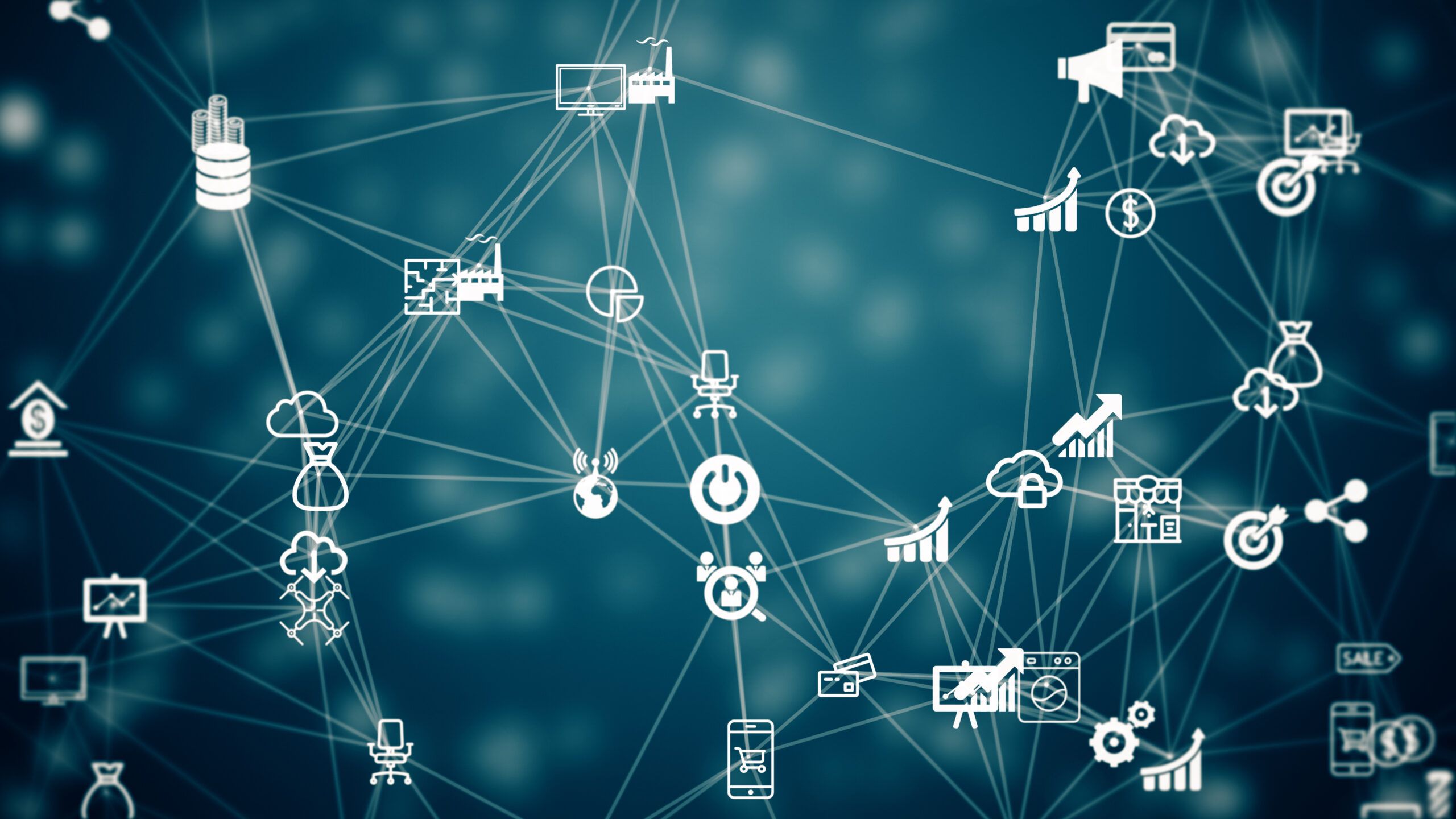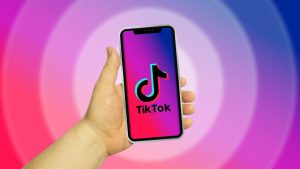Defining the Internet of Things
The Internet of Things (IoT) refers to the network of physical objects, devices, vehicles, buildings, and other items embedded with sensors, software, and connectivity, enabling them to connect and exchange data. In simpler terms, it is the concept of connecting everyday objects to the internet to make them smart and capable of communicating with each other.
The IoT allows these objects to collect and share data, analyze it, and make intelligent decisions based on that information. This interconnectedness extends beyond computers and smartphones, encompassing a wide range of items, such as home appliances, wearable devices, cars, streetlights, and more.
With the proliferation of smart devices and technological advancements, the IoT has become more prevalent in our lives. It has the potential to revolutionize various industries and aspects of our daily routines, enabling greater efficiency, convenience, and automation.
The fundamental idea behind the IoT is to seamlessly integrate the digital and physical worlds, connecting people, objects, and systems in ways that were previously unimaginable. By transforming ordinary objects into intelligent, data-driven devices, the IoT opens up a world of possibilities for improved productivity, enhanced decision-making, and effective resource management.
At its core, the IoT is all about connectivity and data. It involves the connection of devices to the internet and the exchange of data between these devices, allowing them to communicate and interact with each other autonomously. The data collected from these devices can be analyzed to gain valuable insights, enabling businesses and individuals to make informed decisions and optimize their processes.
By harnessing the power of the IoT, industries can streamline operations, enhance safety and security measures, improve energy efficiency, and even transform the way we live and work. From smart homes that can adjust temperature and lighting based on occupancy, to connected cars that provide real-time traffic updates, the possibilities are endless.
As the IoT continues to evolve, it is set to play an increasingly significant role in our interconnected world. However, with this increased connectivity comes challenges and risks that need to be addressed, including data privacy and security concerns, interoperability issues, and the ethical implications of collecting and utilizing vast amounts of personal data.
Despite these challenges, the IoT has tremendous potential to drive innovation, reshape industries, and improve our quality of life. It is an exciting and rapidly expanding field that promises to create a more connected, efficient, and intelligent world for us to thrive in.
The Evolution of the Internet of Things
The Internet of Things (IoT) has undergone a remarkable evolution since its inception. It has transformed from a concept into a reality, revolutionizing the way we interact with technology and the world around us.
The roots of the IoT can be traced back to the early 1980s when computerized vending machines and remote monitoring systems were among the first objects connected to the internet. However, it was not until the late 1990s and early 2000s that the term “Internet of Things” was coined.
During this time, the evolution of the IoT was driven by advancements in wireless communication technologies, such as Bluetooth and RFID (Radio-Frequency Identification). These technologies paved the way for connecting more devices and enabling seamless data exchange.
As the internet became more accessible and affordable, the number of connected devices grew exponentially. In the 2010s, we witnessed the proliferation of smartphones and the widespread adoption of cloud computing. This further fueled the growth of the IoT, as smartphones became central hubs for controlling and monitoring connected devices.
In recent years, the IoT has experienced rapid growth and expansion, thanks to advancements in sensor technology, artificial intelligence, and big data analytics. Sensors have become smaller, cheaper, and more sophisticated, allowing for the integration of IoT capabilities in a wide range of everyday objects.
The availability of large amounts of data generated by connected devices has presented both opportunities and challenges. With improved data analytics and machine learning algorithms, organizations can extract valuable insights from the data, enabling them to make data-driven decisions and create new business models.
Besides the technological advancements, the adoption of IoT solutions by industries has also played a significant role in its evolution. Various sectors, such as healthcare, manufacturing, transportation, and agriculture, have embraced IoT technologies to improve operational efficiency, enhance safety measures, and reduce costs.
Looking ahead, the future of the IoT holds immense potential. As 5G networks become more widespread, they will provide faster and more reliable connectivity, allowing for real-time data processing and low-latency communication. This will enable more complex and sophisticated IoT applications, such as autonomous vehicles and smart cities.
Furthermore, the integration of IoT with emerging technologies like blockchain and edge computing will address some of the existing challenges, such as security and privacy concerns, and enable decentralized and distributed IoT networks.
Key Components of the Internet of Things
The Internet of Things (IoT) is a complex ecosystem that involves several key components working together to enable the seamless connectivity and functionality of smart devices and systems. These components play a crucial role in the functioning and success of the IoT.
1. Devices and Sensors: The foundation of the IoT lies in the devices and sensors that collect and generate data. These can range from small, low-power sensors to larger, more powerful devices. The sensors detect and measure various parameters, such as temperature, humidity, motion, and location, and send this information to the connected devices.
2. Connectivity: Another essential component of the IoT is connectivity. This refers to the technologies and protocols that enable devices to connect and communicate with each other and with the internet. This connectivity can be achieved through various means, including Wi-Fi, Bluetooth, cellular networks, and LPWAN (Low-Power Wide Area Network).
3. Cloud and Edge Computing: The IoT generates vast amounts of data, and efficient processing and storage are critical. Cloud computing enables centralized data storage and analysis, allowing for scalability and accessibility. Edge computing, on the other hand, enables data processing to occur closer to the source, reducing latency and enabling real-time decision-making.
4. Data Analytics and AI: The data collected by IoT devices is of little use without proper analysis. Data analytics techniques, coupled with artificial intelligence (AI) algorithms, are used to extract valuable insights from the data. This enables predictive maintenance, improved efficiency, and informed decision-making.
5. Security and Privacy: With the proliferation of connected devices, ensuring the security and privacy of IoT systems is crucial. Robust security measures, such as encryption, authentication, and authorization, are necessary to protect the data and prevent unauthorized access. Privacy concerns surrounding the collection and use of personal data also need to be addressed.
6. Interoperability: The IoT consists of a wide range of devices and systems from different manufacturers and suppliers. Interoperability ensures that these devices can seamlessly work together and exchange data regardless of their brand or technology. Standards and protocols, such as MQTT and JSON, play a vital role in achieving this interoperability.
7. User Interface and Experience: The successful adoption of IoT solutions relies on intuitive and user-friendly interfaces. User interfaces can be in the form of mobile apps, web applications, or voice assistants, allowing users to control and manage connected devices easily. A seamless user experience is essential in driving IoT adoption and maximizing its benefits.
These key components form the building blocks of the IoT ecosystem, working together to create a network of connected devices and systems. The proper integration and optimization of these components are vital to harness the full potential of the Internet of Things.
How the Internet of Things Works
The Internet of Things (IoT) works by connecting everyday objects to the internet and enabling them to communicate and exchange data with each other and with humans. This interconnected network of devices and systems relies on a combination of hardware, software, and connectivity to function.
At its core, the IoT consists of three main components:
1. Devices and Sensors: IoT devices, such as smart home appliances, wearables, and industrial machinery, are equipped with sensors that collect data from the surrounding environment. These sensors can measure various parameters, including temperature, humidity, motion, and location.
2. Connectivity: Connectivity is crucial to the IoT, as it enables devices to exchange data and communicate with each other and with the internet. Devices can be connected through different protocols and technologies, such as Wi-Fi, Bluetooth, cellular networks, or even specialized IoT networks like LoRaWAN or Zigbee.
3. Data Processing and Analytics: The data collected by IoT devices needs to be processed and analyzed to extract meaningful insights. Cloud computing platforms are often used to store and process the vast amounts of data generated by the IoT. Additionally, edge computing allows data to be processed closer to the source, reducing latency and enabling real-time decision-making.
The process of how the IoT works involves the following steps:
1. Data Collection: IoT devices and sensors continuously collect data from the environment or from user interactions. For example, a temperature sensor in a smart thermostat measures the ambient temperature.
2. Data Transmission: The collected data is then sent to the cloud or a local computing device using wireless communication technologies such as Wi-Fi or cellular networks. This data transmission can be scheduled at regular intervals or triggered by specific events.
3. Data Processing: Once the data reaches its destination, it is processed and analyzed. Data analytics techniques, including machine learning algorithms, can be applied to gain meaningful insights from the data. For instance, the collected temperature data can be analyzed to determine the most energy-efficient settings for the thermostat.
4. Decision-Making and Action: Based on the analyzed data, decisions can be made automatically or by human intervention. For example, if the temperature in a room exceeds a certain threshold, the smart thermostat can automatically adjust the temperature to maintain comfort.
5. Interconnectivity and Control: The IoT allows for seamless connectivity and control of devices. Users can interact with their IoT devices through mobile apps, web interfaces, or voice assistants, allowing them to remotely monitor and control various aspects of their connected environment.
By leveraging devices, connectivity, and data processing, the IoT enables improved efficiency, automation, and decision-making capabilities across various industries and sectors. It has the potential to transform the way we live, work, and interact with the world around us.
Benefits of the Internet of Things
The Internet of Things (IoT) offers numerous benefits and advantages that have the potential to transform industries, enhance our daily lives, and drive economic growth. From improved efficiency and productivity to enhanced decision-making and convenience, the benefits of the IoT are far-reaching.
1. Increased Efficiency: IoT enables automation and remote monitoring of processes, resulting in increased efficiency. From smart manufacturing systems that optimize production lines to smart homes that automatically adjust energy consumption based on occupancy, the IoT streamlines operations and reduces waste.
2. Improved Decision-Making: By providing real-time data and insights, the IoT empowers businesses and individuals to make informed decisions. For example, data collected from sensors in agriculture can help farmers optimize irrigation schedules, resulting in improved crop yield and reduced water usage.
3. Enhanced Safety and Security: IoT technologies can enhance safety measures in various domains. For instance, in the healthcare sector, IoT-enabled wearable devices can monitor vital signs and send alerts in case of emergencies. In smart cities, connected cameras and sensors can detect potential security threats and trigger immediate responses.
4. Convenience and Automation: IoT devices make our lives more convenient by automating routine tasks. From smart thermostats that adjust temperature based on occupancy to voice-controlled virtual assistants that can schedule appointments and manage smart home devices, the IoT simplifies daily routines.
5. Optimized Resource Management: By collecting and analyzing data, the IoT enables optimized resource management. For instance, smart grid systems can monitor energy consumption and adjust distribution to minimize waste. This leads to reduced costs and a more sustainable use of resources.
6. Improved Health and Well-being: IoT devices in healthcare facilitate remote monitoring of patients, enabling early detection of health issues and timely intervention. Wearable devices can track fitness levels and provide personalized health recommendations, promoting a healthier lifestyle.
7. Environmental Sustainability: The IoT plays a vital role in promoting environmental sustainability. For example, smart buildings can optimize energy usage, reducing greenhouse gas emissions. Smart waste management systems can optimize collection routes and reduce landfill waste.
8. Empowering Innovation: The IoT fosters innovation by creating new business opportunities and transforming existing industries. Startups and entrepreneurs can develop IoT-enabled products and services, driving economic growth and job creation.
9. Improved Customer Experience: Businesses can use IoT data to personalize and enhance the customer experience. For instance, retailers can utilize IoT technology to deliver targeted advertising and personalized recommendations based on customer preferences and behaviors.
10. Enablement of Smart Cities: IoT infrastructure is a key component of smart city initiatives. By connecting various systems and devices, such as transportation, utilities, and public safety, the IoT enables efficient urban planning, optimized resource allocation, and improved quality of life for city dwellers.
The benefits of the Internet of Things extend to nearly every aspect of our lives and have the potential to create a more connected and efficient world. However, it is crucial to address the challenges associated with data privacy, security, and interoperability to fully realize the potential of the IoT.
Challenges and Risks of the Internet of Things
While the Internet of Things (IoT) holds immense promise and potential, it is not without its challenges and risks. As the IoT continues to grow and evolve, it is important to address these issues to ensure the secure and responsible implementation of IoT technologies.
1. Security Vulnerabilities: One of the biggest concerns surrounding the IoT is security. With billions of interconnected devices collecting and transmitting data, there is an increased risk of cyber-attacks and unauthorized access. Weak security measures and vulnerabilities in IoT devices can lead to data breaches, privacy violations, and even compromise the physical safety of individuals.
2. Data Privacy: With the proliferation of IoT devices, there is a significant amount of personal data being collected and shared. This raises concerns about data privacy and how the collected information is used, stored, and shared. Unauthorized access to personal data can have serious implications for individuals, including identity theft, fraud, and loss of privacy.
3. Interoperability: The IoT ecosystem consists of devices from different manufacturers, using different protocols and technologies. Lack of interoperability can hinder the seamless integration and communication between devices, leading to compatibility issues and limiting the overall effectiveness of the IoT.
4. Complexity and Scalability: Managing and maintaining a vast network of interconnected devices can be challenging. As the number of IoT devices continues to grow exponentially, it becomes increasingly difficult to manage data flow, device updates, and system scalability. Failure to handle this complexity effectively can lead to inefficiencies and system outages.
5. Ethical Concerns: The IoT raises ethical questions regarding the collection, storage, and use of data. There are concerns about potential discriminatory practices, as well as the unintended consequences of relying heavily on algorithms and artificial intelligence to make decisions. It is crucial to address these ethical concerns to ensure that the IoT benefits all individuals and does not exacerbate existing social inequalities.
6. Regulatory and Legal Challenges: The rapid growth of the IoT has outpaced the development of comprehensive regulations and standards. This poses challenges in terms of cybersecurity regulations, data protection laws, and liability issues. Establishing appropriate regulations and legal frameworks is necessary to mitigate risks and ensure accountability.
7. Dependency on Connectivity: The functionality of many IoT devices relies heavily on a stable and reliable internet connection. Any disruptions in connectivity can hinder the performance and effectiveness of IoT systems. This dependency on connectivity poses risks, particularly in remote areas or during network outages.
8. Lack of Awareness and Education: Many individuals and organizations are still not fully aware of the potential risks associated with the IoT and how to protect themselves. Lack of awareness and education about IoT security practices makes users more vulnerable to cyber-attacks and increases the overall risk for all sectors involved.
Addressing these challenges and risks requires a collective effort from governments, organizations, manufacturers, and individuals. It involves implementing robust security measures, establishing clear regulations, promoting data privacy, fostering interoperability, and providing education and awareness programs. By proactively addressing these issues, we can unlock the full potential of the IoT while minimizing risks and ensuring a secure and trustworthy ecosystem.
Real-World Examples of the Internet of Things
The Internet of Things (IoT) has already made significant advancements in various industries, impacting our daily lives in numerous ways. From smart homes to industrial automation, the IoT has transformed the way we interact with technology. Here are some real-world examples of how the IoT is being utilized:
1. Smart Homes: IoT-enabled devices have revolutionized the concept of smart homes. From voice-enabled assistants like Amazon Echo and Google Home to connected thermostats, lights, and security systems, homeowners can control and monitor their homes remotely. For example, users can adjust room temperatures, turn off lights, and even secure their homes using their smartphones or voice commands.
2. Smart Cities: Cities around the world are implementing IoT solutions to enhance efficiency and improve the quality of life for their residents. IoT-powered smart streetlights can adjust brightness based on ambient light levels, reducing energy consumption. In addition, IoT sensors monitor air quality, traffic flow, and waste management to create more sustainable and livable urban environments.
3. Industrial Automation: In industries such as manufacturing, the IoT enables automation and optimization of processes. Machines equipped with IoT sensors can collect real-time data on performance, predict maintenance needs, and optimize production schedules. This leads to increased efficiency, reduced downtime, and cost savings.
4. Healthcare Monitoring: IoT devices play a critical role in remote patient monitoring and healthcare management. Wearable devices, such as smartwatches and fitness trackers, can monitor vital signs, track physical activity, and provide real-time feedback. This allows healthcare professionals to remotely monitor patients, detect anomalies, and provide timely interventions.
5. Agriculture: IoT technologies are transforming the agricultural industry by enabling precision farming and efficient resource management. Smart irrigation systems use IoT sensors to monitor soil moisture levels and weather conditions, optimizing irrigation schedules and reducing water waste. Additionally, drones equipped with imaging sensors collect data on crop health, enabling farmers to make data-driven decisions for crop management.
6. Transportation: IoT applications are reshaping the transportation industry, improving safety, efficiency, and convenience. Smart traffic management systems use IoT sensors and data analytics to optimize traffic flow, reduce congestion, and enhance road safety. Additionally, IoT-enabled fleet management systems track vehicles in real-time, providing valuable insights for optimizing routes, reducing fuel consumption, and enhancing logistics operations.
7. Retail and Inventory Management: The IoT improves retail operations by enabling real-time inventory tracking and optimizing supply chain processes. IoT sensors placed on shelves can monitor stock levels and automatically trigger reordering when inventory is low. This ensures that products are always available for customers, minimizing out-of-stock situations and improving customer satisfaction.
8. Energy Management: IoT technologies are playing a pivotal role in energy management by optimizing energy consumption, reducing costs, and promoting sustainability. Smart grids use IoT sensors and data analytics to monitor energy usage patterns, enabling utilities to balance supply and demand more efficiently. Smart meters give consumers real-time insights into their energy consumption, encouraging energy conservation and facilitating cost savings.
These examples represent just a fraction of the potential applications of the IoT across various industries. As technology continues to advance, we can expect to see even more innovative use cases and transformative benefits in the near future.
Industries Impacted by the Internet of Things
The Internet of Things (IoT) has the potential to transform numerous industries, revolutionizing the way they operate and deliver products and services. Here are some key industries that have already been significantly impacted by the IoT:
1. Manufacturing: IoT technology is revolutionizing manufacturing processes, creating what is known as the Industrial Internet of Things (IIoT). By adopting IoT solutions, manufacturers can collect real-time data on machine performance, optimize production schedules, and enable predictive maintenance. This leads to increased efficiency, reduced downtime, and improved product quality.
2. Healthcare: IoT devices are transforming the healthcare industry, improving patient care and efficiency. IoT-enabled devices such as wearables, remote monitoring systems, and smart medical devices provide real-time health data and enable remote patient monitoring. This allows healthcare professionals to deliver more personalized care, track patient progress, and intervene in real-time, improving outcomes and reducing the need for hospital visits.
3. Retail: The retail industry is leveraging the IoT to enhance customer experiences and optimize operations. IoT technology enables real-time inventory management, allowing retailers to track stock levels, prevent stockouts, and improve supply chain efficiency. Additionally, personalized marketing and targeted advertising based on IoT-driven customer insights help deliver better customer experiences and increase sales.
4. Transportation and Logistics: The IoT is reshaping transportation by enabling better fleet management, optimized routes, and improved safety measures. IoT sensors in vehicles and infrastructure provide real-time data on traffic patterns, weather conditions, and vehicle performance. This allows for efficient route planning, reduced fuel consumption, enhanced safety measures, and improved logistics operations.
5. Energy and Utilities: The IoT is revolutionizing the energy and utilities sector by enabling smart grid systems and efficient energy management. IoT devices and sensors help monitor energy consumption, manage demand-response programs, and identify areas of energy wastage. By optimizing energy usage and integrating renewable energy sources, the IoT supports sustainable energy practices and helps reduce costs.
6. Agriculture: The agricultural industry is being transformed by the IoT with the advent of “smart farming.” IoT sensors monitor and collect data on soil moisture levels, weather conditions, and crop health. Farmers can use this data to optimize irrigation schedules, apply the right amount of fertilizers, and detect diseases early. This leads to increased crop yields, reduced resource wastage, and improved sustainability.
7. Smart Cities: IoT technology is being deployed in urban areas to build smart cities that improve the quality of life for residents. Connected devices and sensors monitor various aspects, including traffic flow, waste management, air quality, and public safety. By analyzing the collected data, cities can optimize resource allocation, reduce congestion, improve environmental conditions, and enhance overall livability.
8. Financial Services: The IoT is transforming the financial sector by enabling innovative products and services. IoT devices provide real-time data on customer behavior and preferences, enabling more accurate risk assessments and personalized offerings. For example, insurance companies use IoT telematics devices in vehicles to price policies based on actual driving behavior.
These industries represent just a glimpse of the potential impact of the IoT on various sectors. The continued growth and advancement of IoT technology will unlock even more opportunities and transformation across industries, leading to more efficient operations, improved customer experiences, and sustainable practices.
The Future of the Internet of Things
The Internet of Things (IoT) has already made significant strides, but its potential for the future is even more exciting. As technology continues to evolve, the IoT is expected to play an increasingly integral role in our daily lives and transform industries. Here are some key areas that show promise for the future of the IoT:
1. Explosive Growth: The number of connected devices is projected to skyrocket in the coming years. As more devices become IoT-enabled, ranging from consumer electronics to industrial machinery, the IoT ecosystem will continue to expand exponentially, enabling more interconnectedness and creating vast opportunities for innovation and optimization.
2. 5G and Edge Computing: As 5G networks become more widespread, they will provide faster and more reliable connectivity, unlocking the potential for real-time data processing and low-latency communication. This will be particularly crucial for applications such as autonomous vehicles, remote surgery, augmented reality, and smart cities. Edge computing will also gain prominence, allowing data processing to occur closer to the source, reducing latency and improving efficiency.
3. Artificial Intelligence and Machine Learning: The combination of IoT with artificial intelligence (AI) and machine learning (ML) will enhance the capabilities of IoT devices. AI algorithms will be able to process and analyze vast amounts of IoT data in real-time, enabling intelligent decision-making and automation. This will lead to greater efficiency, predictive maintenance, and personalized experiences across industries.
4. Interoperability and Standards: The IoT is still fragmented, with a variety of devices using different protocols and technologies. Efforts to establish interoperability standards and frameworks will accelerate, enabling seamless communication and integration between different IoT devices and platforms. This will promote interoperability, simplify IoT deployments, and facilitate the development of new applications and services.
5. Enhanced Security and Privacy: With the growing complexity of the IoT and the increasing number of connected devices, ensuring robust security and privacy measures will be paramount. Advancements in encryption, blockchain technology, and secure communication protocols will be essential in safeguarding IoT systems and protecting sensitive data. Stricter regulations and industry collaborations will further address security concerns and establish best practices.
6. Edge AI and Distributed Intelligence: The emergence of edge AI and distributed intelligence will bring decision-making capabilities closer to the source of data. This means that instead of relying solely on centralized cloud infrastructure, IoT devices will be able to process and analyze data locally, without the need for constant internet connectivity. This will reduce latency, enhance real-time responsiveness, and improve autonomy for IoT devices.
7. Sector-Specific Innovations: Different industries will continue to find innovative applications for the IoT. For example, in healthcare, remote patient monitoring and telemedicine will become more prevalent, allowing for personalized care and improved health outcomes. In agriculture, precision farming and smart irrigation techniques will further optimize resource usage. Innovations specific to transportation, energy, and manufacturing will continue to drive efficiency, sustainability, and safety.
The future of the IoT holds tremendous potential for transforming industries, improving quality of life, and addressing global challenges. However, as the IoT expands, it is crucial to address concerns surrounding privacy, security, and ethical use of data. With responsible implementation and continued advancements, the IoT will undoubtedly revolutionize the way we interact with technology and continue to shape our connected world.



![12 BEST RARBG Proxy and Mirror Sites [100% Unblocked & Working]](https://citizenside.com/wp-content/uploads/2020/05/Torrenting-300x169.jpeg)


